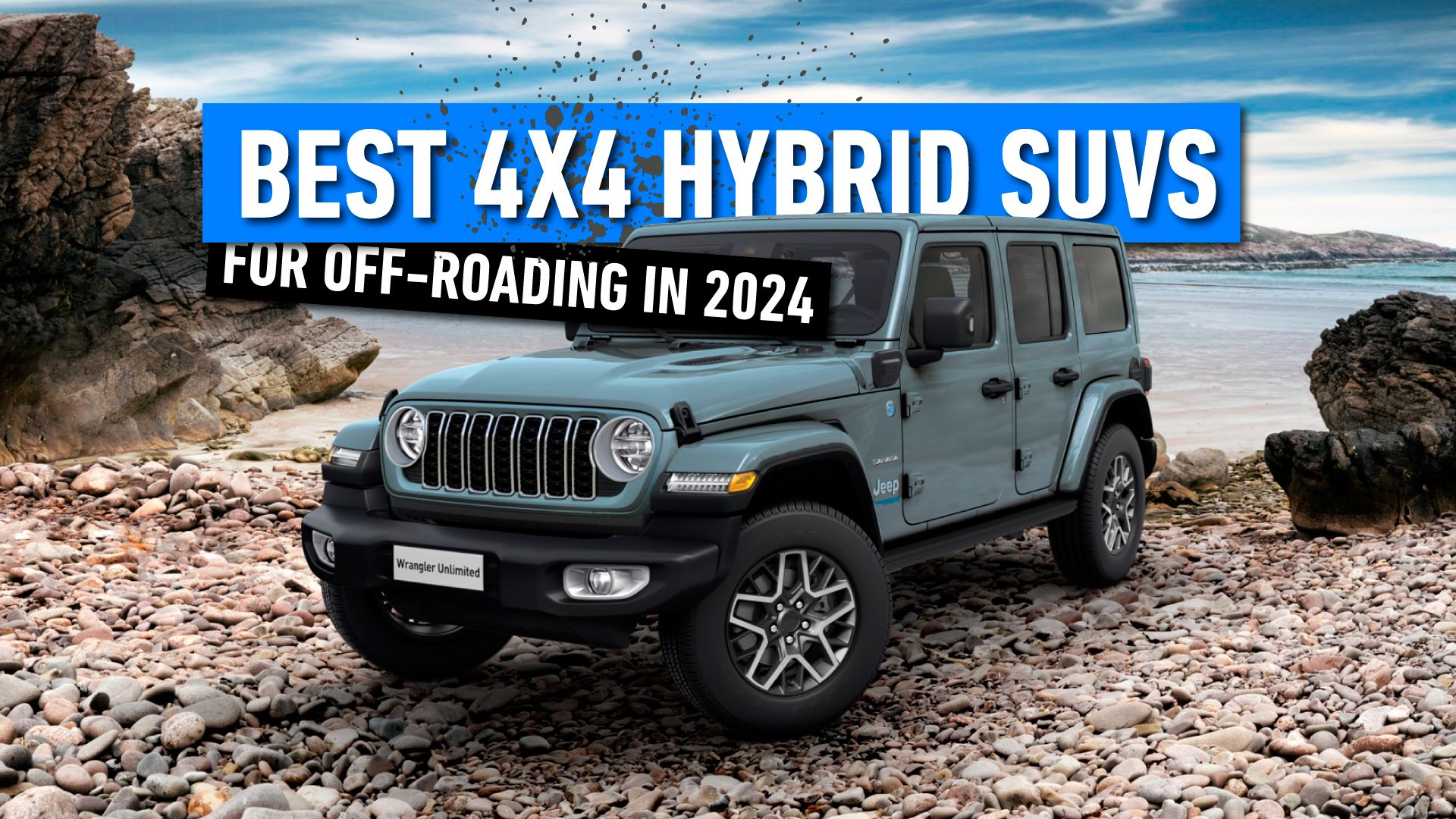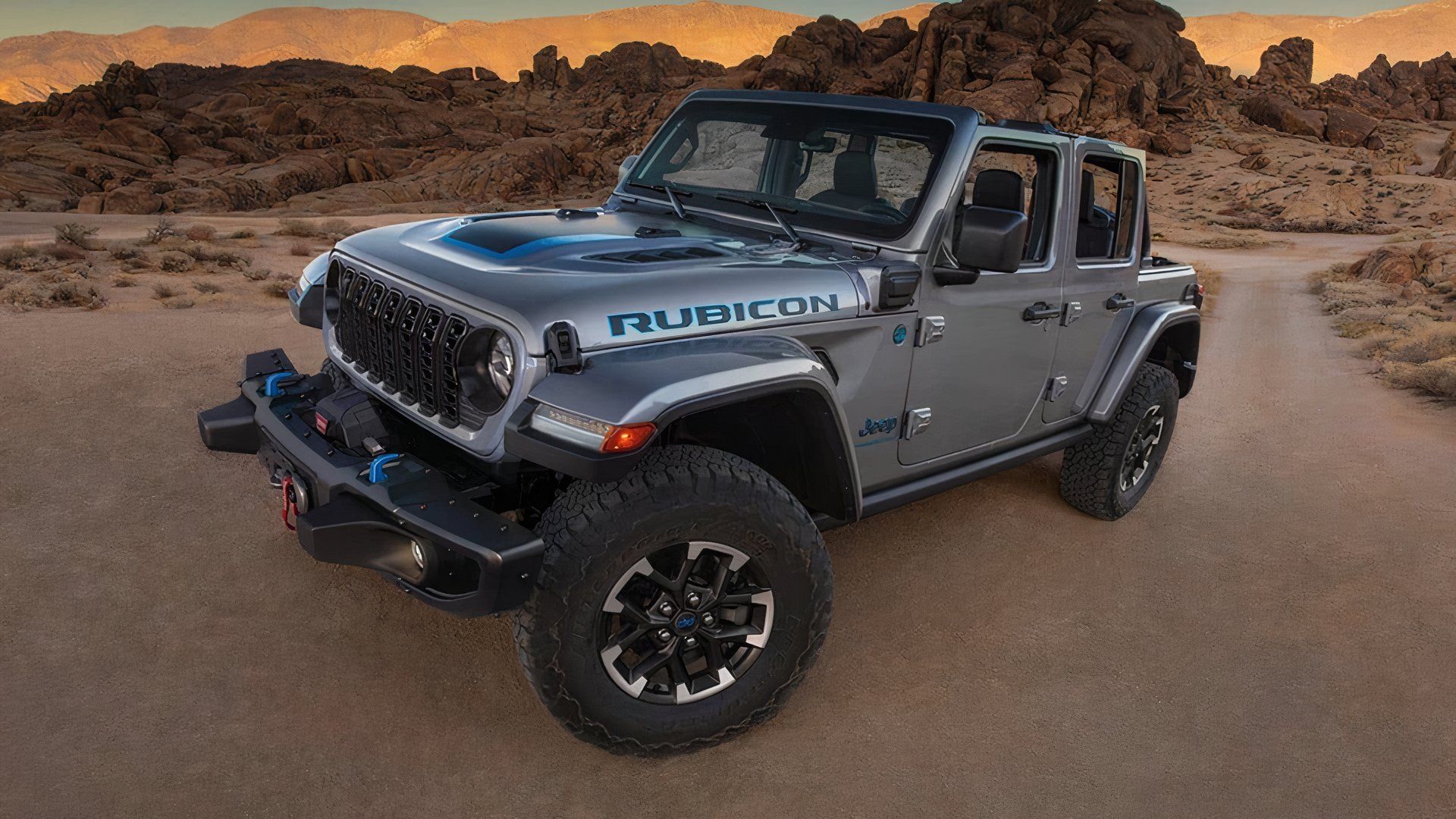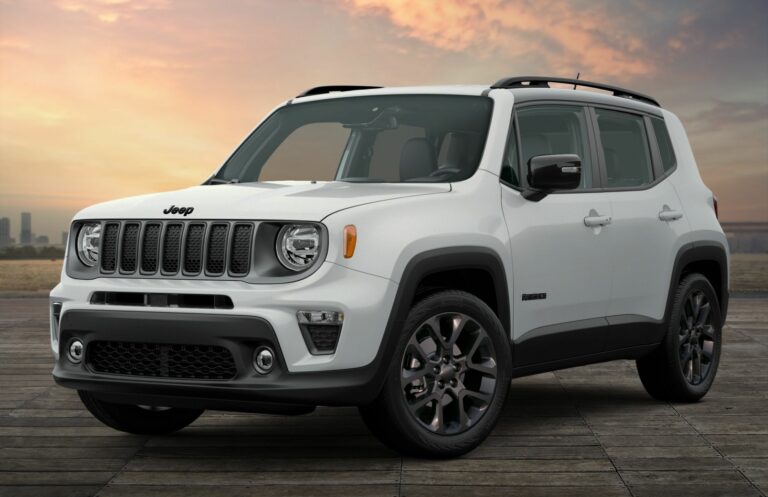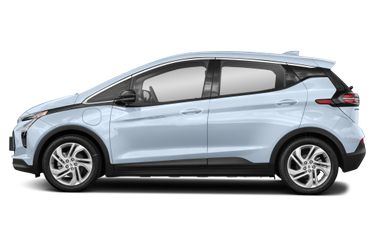Wrangler Jeep Top Speed: Unraveling the Limits and Capabilities
Wrangler Jeep Top Speed: Unraveling the Limits and Capabilities jeeps.truckstrend.com
The iconic Jeep Wrangler, a vehicle synonymous with rugged off-road prowess and adventurous spirit, often sparks curiosity about its on-road performance, particularly its top speed. Unlike sleek sports cars designed for the track, the Wrangler is engineered for conquering challenging terrains, a purpose that inherently shapes its speed capabilities and limitations. Understanding the Wrangler’s top speed isn’t just about a number; it’s about appreciating its design philosophy, engineering constraints, safety considerations, and the impact of modifications. This comprehensive guide delves into every facet of Wrangler Jeep top speed, from factory settings to the effects of aftermarket upgrades, providing practical insights for every owner and enthusiast.
Understanding the "Top Speed" of a Wrangler: More Than Just a Number
Wrangler Jeep Top Speed: Unraveling the Limits and Capabilities
For most vehicles, top speed is a measure of ultimate velocity on a flat surface. For the Jeep Wrangler, however, the concept is nuanced. Factory Wranglers are typically electronically limited in their top speed, a deliberate engineering decision rooted in safety, stability, and the vehicle’s primary off-road purpose. This limitation ensures that the vehicle operates within safe parameters, especially considering its high center of gravity, live axles, and often knobby, off-road biased tires.
The electronic limiter, usually set between 90 and 110 mph (approximately 145 to 177 km/h) depending on the specific model year, engine, and trim, serves several crucial functions:
- Safety: Prevents instability and potential rollovers at excessively high speeds, particularly given the Wrangler’s boxy aerodynamics and off-road suspension.
- Component Protection: Safeguards drivetrain components (transmission, differentials, axles) from undue stress and premature wear.
- Tire Limitations: Matches the vehicle’s top speed to the speed ratings of factory-installed tires, which are often not designed for sustained high-speed highway travel.
While a Wrangler might theoretically be capable of higher speeds without the limiter, bypassing it introduces significant risks and is generally not recommended without extensive, professional modifications to the suspension, braking system, and tires.

Factors Influencing Wrangler Top Speed
The actual attainable top speed of a Jeep Wrangler, even within its electronically limited range, is influenced by a myriad of factors. These include:
- Engine Type and Horsepower: Newer Wranglers offer a variety of powertrains, from the Pentastar V6 to the 2.0L turbocharged inline-four, the 3.0L EcoDiesel, and even the formidable 6.4L HEMI V8 in the Rubicon 392. More powerful engines inherently offer greater acceleration and the potential to reach the limiter more quickly.
- Transmission: Both manual and automatic transmissions play a role. Modern multi-speed automatics often optimize gear ratios for efficiency and performance, contributing to smoother acceleration towards the top speed.
- Aerodynamics: The Wrangler’s iconic boxy shape, while excellent for off-road visibility and utility, is a significant aerodynamic challenge. It creates substantial drag, requiring more power to overcome air resistance at higher speeds.
- Gearing (Axle Ratios): The differential gear ratios determine how many times the driveshaft spins for each rotation of the wheels. "Shorter" (higher numerical) gears provide more torque for off-roading and crawling but reduce top-end speed and fuel economy. "Taller" (lower numerical) gears allow for higher top speeds but sacrifice low-end torque.
- Tire Size and Type: Larger diameter tires effectively "tall" the gearing, reducing the final drive ratio and potentially lowering actual top speed or making it harder to reach the limiter. Aggressive off-road tread patterns also increase rolling resistance, demanding more power.
- Weight: Added weight from passengers, cargo, heavy bumpers, winches, or roof racks will negatively impact acceleration and overall top speed.
- Environmental Factors: Altitude, headwind, road incline, and temperature can all affect a vehicle’s ability to reach its maximum speed.
![]()

The Impact of Modifications on Top Speed
One of the most appealing aspects of Wrangler ownership is the vast aftermarket customization potential. However, many popular modifications designed to enhance off-road capability can inadvertently affect top speed.
- Lift Kits and Larger Tires: These are perhaps the most common modifications. A lift kit raises the vehicle’s center of gravity, while larger, heavier tires increase unsprung weight and rolling resistance. Critically, larger tires effectively change the final drive ratio, making the vehicle feel sluggish and reducing actual top speed unless accompanied by regearing. They also require recalibration of the speedometer.
- Regearing: To compensate for larger tires, many owners opt for "regearing" – installing new, numerically higher axle ratios. This restores lost torque and acceleration, allowing the engine to operate in its optimal power band, and can help the vehicle reach its electronic speed limiter more easily, especially with very large tires.
- Engine Tuning/Performance Upgrades: Aftermarket engine tunes, cold air intakes, and exhaust systems can increase horsepower and torque, helping the Wrangler accelerate faster and potentially reach its factory limiter more quickly. Some tuners can also adjust or remove the electronic speed limiter, but this comes with significant safety and warranty implications.
- Heavy Accessories: Steel bumpers, rock sliders, winches, and roof racks add considerable weight, negatively impacting acceleration and overall speed.
- Suspension Upgrades: While primarily for off-road articulation and ride quality, properly tuned performance suspensions can improve stability at higher speeds, making the vehicle feel more composed. However, a poorly chosen or installed lift can make the vehicle dangerously unstable.
Practical Advice: When considering modifications, always evaluate their holistic impact. A professional shop can advise on appropriate gearing to match tire size, ensuring optimal performance without sacrificing too much on-road drivability or safety.
Safety and Legal Considerations for High-Speed Wrangler Operation
Operating any vehicle at higher speeds demands attention to safety, but it’s particularly critical for a Jeep Wrangler.
- Tire Speed Ratings: Every tire has a speed rating (e.g., S for 112 mph, T for 118 mph, H for 130 mph). Factory Wrangler tires typically have ratings commensurate with the vehicle’s limited top speed. When installing aftermarket tires, especially aggressive M/T (Mud Terrain) tires, always check their speed rating. Many off-road tires have lower speed ratings than highway tires, making them unsuitable for sustained high-speed driving. Exceeding a tire’s speed rating can lead to excessive heat buildup, tread separation, and catastrophic failure.
- Braking Performance: At higher speeds, stopping distances increase dramatically. Ensure your Wrangler’s braking system is in excellent condition. If you’ve added significant weight or larger tires, consider upgrading to heavy-duty brakes.
- Stability and Handling: The Wrangler’s solid axles and short wheelbase can lead to a less refined highway ride compared to independent suspension vehicles. At higher speeds, crosswinds, uneven pavement, and sudden maneuvers can significantly impact stability. A quality steering stabilizer can help mitigate "death wobble" and improve steering feel.
- Legal Speed Limits: Always adhere to posted speed limits. Pushing your Wrangler beyond its comfortable and safe operating parameters, even if it’s technically capable, is irresponsible and illegal.
- Warranty Implications: Modifying engine parameters (tuning) or removing the speed limiter can void your vehicle’s factory warranty. Be aware of these consequences before making such changes.
Maintaining Optimal Performance and Safety
To ensure your Wrangler performs safely and efficiently, regardless of whether you’re aiming for top speed or just comfortable highway cruising:
- Regular Maintenance: Adhere to the manufacturer’s recommended service schedule. This includes oil changes, tire rotations, brake inspections, and fluid checks.
- Tire Pressure: Maintain correct tire pressure. Underinflated tires generate excessive heat and can fail, while overinflated tires reduce traction and comfort.
- Suspension Health: Regularly inspect your suspension components, including shocks, springs, bushings, and steering linkages. Worn components can severely compromise handling and safety at any speed.
- Professional Installation: For any significant modifications, especially those affecting performance or safety (lifts, regearing, engine tuning), always seek professional installation from a reputable shop.
Wrangler Jeep Top Speed: Model-Specific Overview & Price/Cost Considerations
It’s important to clarify that "top speed" isn’t a purchasable feature, but rather an inherent characteristic influenced by the vehicle’s design and powertrain, with costs associated with modifications that affect it. Below is a general overview of common Wrangler models and their typical factory-limited top speeds, along with the general cost implications of modifications that influence speed capabilities.
| Wrangler Model/Engine Variant | Typical Factory Top Speed (Approx.) | Key Factors Influencing Speed | General Cost Implications of Modifications Affecting Speed |
|---|---|---|---|
| Wrangler JL (2018-Present) | |||
| 3.6L Pentastar V6 | 100-110 mph (160-177 km/h) | Engine power, gearing, tire size, electronic limiter. | Lift Kit & Larger Tires: $1,500 – $8,000+ (reduces top speed without regear) |
| 2.0L Turbo I4 | 95-105 mph (153-169 km/h) | Turbo torque, lighter engine, gearing, electronic limiter. | Regearing (for larger tires): $1,500 – $3,000+ (restores performance, helps reach limiter) |
| 3.0L EcoDiesel V6 | 90-95 mph (145-153 km/h) | Diesel torque, heavier engine, specific gearing. | Engine Tune (performance): $500 – $1,500+ (can increase power/speed, may void warranty) |
| 6.4L HEMI V8 (Rubicon 392) | 99 mph (159 km/h) (limited) | High horsepower, but still electronically limited due to off-road design. | Heavy-Duty Brakes: $500 – $2,000+ (recommended for safety with speed/weight) |
| Wrangler JK (2007-2017) | |||
| 3.8L V6 (early JK) | 90-95 mph (145-153 km/h) | Less powerful engine, gearing, electronic limiter. | Steering Stabilizer: $100 – $300 (improves high-speed stability) |
| 3.6L Pentastar V6 (later JK) | 100-105 mph (160-169 km/h) | Improved engine, gearing, electronic limiter. | Aftermarket Wheels (lighter): $600 – $2,000+ (can slightly improve acceleration) |
| Wrangler TJ (1997-2006) | |||
| 4.0L I6 | 85-90 mph (137-145 km/h) | Solid axles, older engine tech, lower power. | Performance Exhaust/Intake: $300 – $1,000 (minor power gains, sound) |
| Wrangler YJ (1987-1995) | |||
| 4.2L I6 / 4.0L I6 | 75-85 mph (121-137 km/h) | Leaf spring suspension, older engine tech, less power. | Note: Modifying older Wranglers for high speed is generally discouraged due to inherent design limitations and safety concerns. |
Note: The "General Cost Implications" are estimates and can vary widely based on brand, quality, labor rates, and complexity of installation. Modifying a Wrangler to significantly increase its top speed beyond factory limits is a complex and potentially dangerous undertaking that should only be performed by highly experienced professionals with a complete understanding of vehicle dynamics and safety engineering.
Frequently Asked Questions (FAQ) about Wrangler Jeep Top Speed
Q1: Why are Jeep Wranglers electronically limited in their top speed?
A1: Wranglers are limited primarily for safety. Their high center of gravity, solid axles, and off-road tires can make them unstable at very high speeds. The limiter protects components and ensures the vehicle operates within safe parameters for its design.
Q2: Can I remove the speed limiter on my Wrangler? Is it safe?
A2: Yes, aftermarket tuners can often remove or adjust the speed limiter. However, it is generally not recommended without significant, professional upgrades to the suspension, brakes, and tires to handle the increased speed safely. Doing so can also void your warranty and is extremely dangerous.
Q3: How do larger tires affect my Wrangler’s top speed?
A3: Larger tires effectively "tall" your gearing, meaning the engine has to work harder to turn them. This reduces acceleration and can lower your actual top speed unless you regear your axles to compensate. They also increase rolling resistance and weight.
Q4: What is "regearing" and how does it relate to top speed?
A4: Regearing involves changing the differential gear ratios in your axles. If you install larger tires, regearing to a numerically higher (shorter) ratio restores the effective final drive ratio, bringing back lost acceleration and making it easier for the engine to reach its power band, thus allowing the vehicle to hit its electronic speed limiter more readily.
Q5: Is a Wrangler comfortable at its top speed on the highway?
A5: While modern Wranglers (especially JL models) are much more refined on the highway than their predecessors, they are still not designed for sustained high-speed cruising like a sedan. Wind noise, road noise from off-road tires, and the inherent stability characteristics of a tall, solid-axle vehicle can make extended periods at its limited top speed less comfortable than in other vehicles.
Q6: Does the engine type (e.g., V6 vs. Turbo vs. EcoDiesel vs. HEMI) affect the limited top speed?
A6: The electronic speed limiter is generally set by the vehicle model, not solely by the engine. However, more powerful engines (like the Rubicon 392’s HEMI) will reach that limiter much faster and with less effort. Some specific trims or engines might have slightly different factory limits.
Conclusion: Respecting the Wrangler’s Design Philosophy
The Jeep Wrangler’s top speed is a characteristic deeply intertwined with its identity as a premier off-road vehicle. While it might not win races on the highway, its capabilities lie in conquering trails, scaling obstacles, and providing unparalleled adventure. Understanding its factory limitations is crucial for safety and longevity. For those who modify their Wranglers, a responsible approach that balances off-road prowess with on-road safety, especially concerning speed, is paramount. By appreciating the engineering behind its design and making informed choices about modifications, Wrangler owners can enjoy the best of both worlds – legendary off-road capability and safe, enjoyable on-road performance within its intended parameters.





